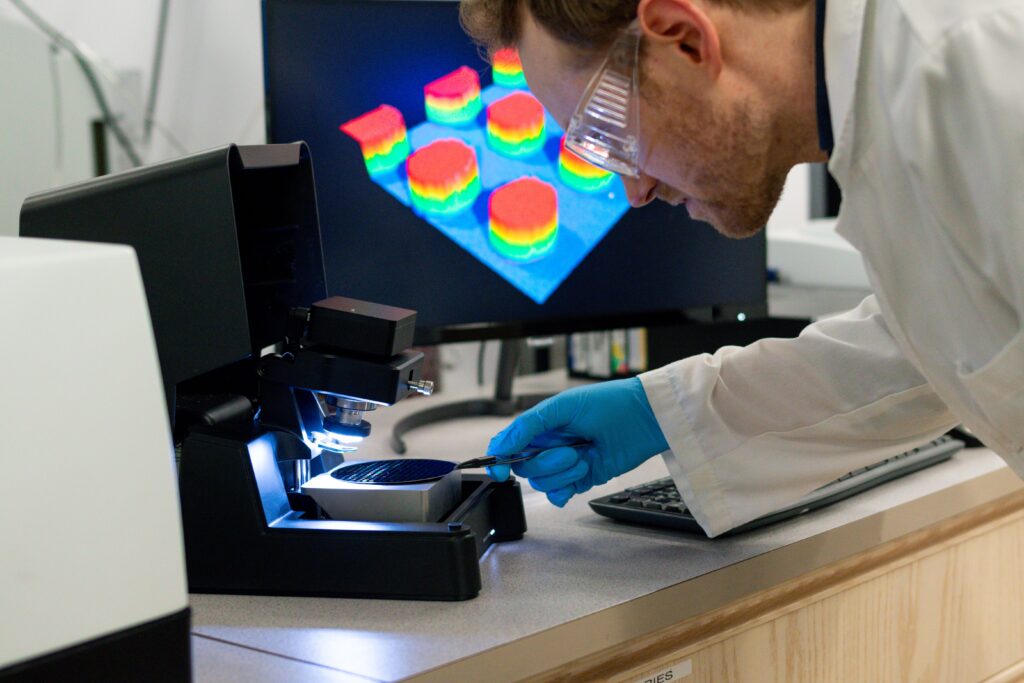Redux AFM
Effortlessly collect high-resolution 3D topography data in minutes without leaving your lab.
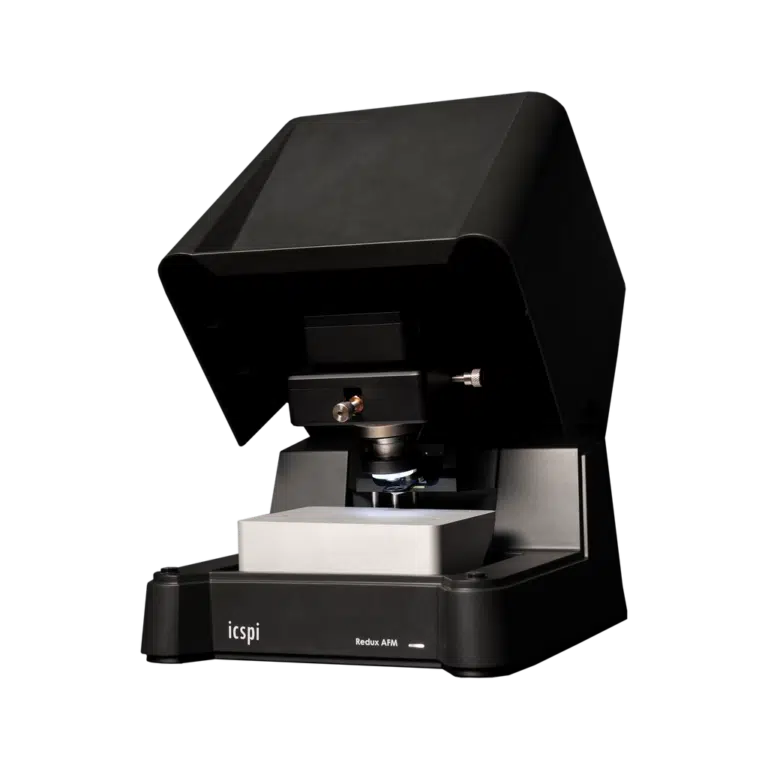
Get unmatched time-to-results and ease-of-use with the Redux AFM
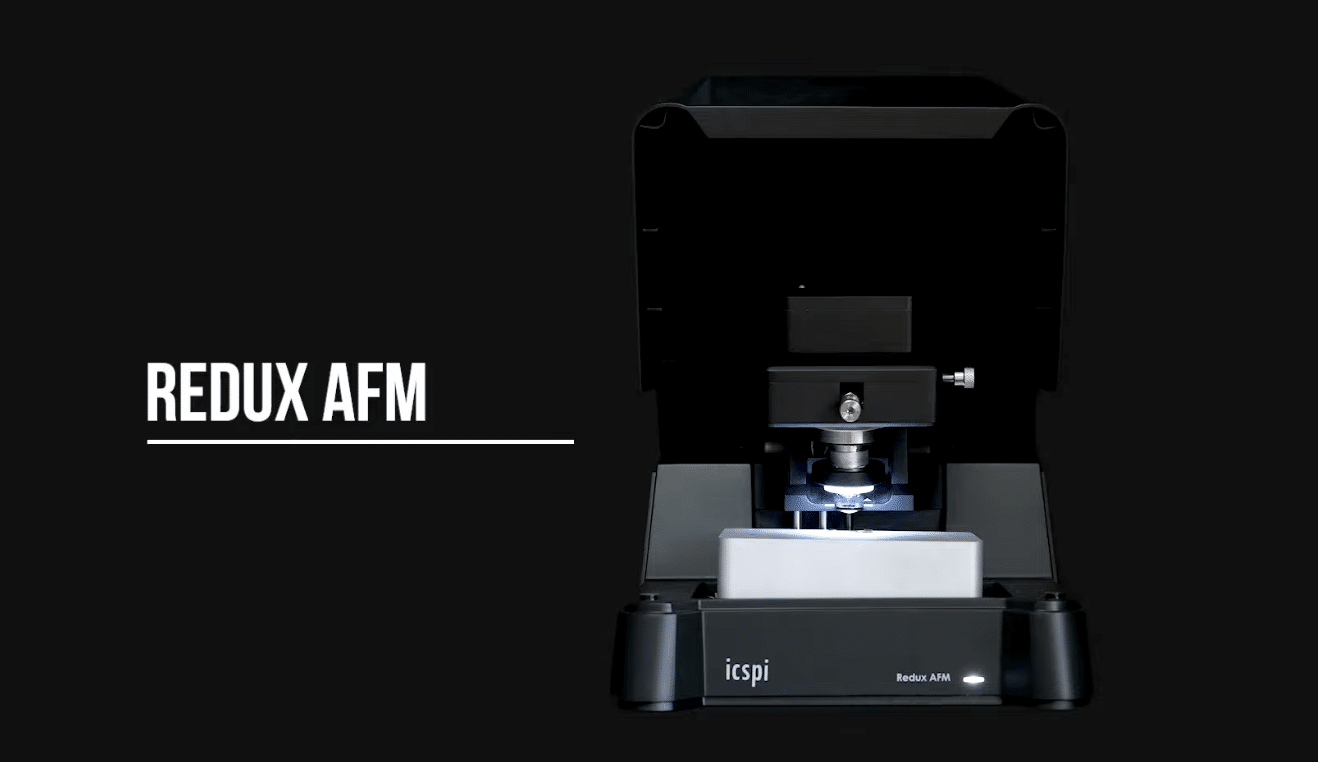
Watch the intro
Discover our latest AFM. Watch this video to learn more about atomic force microscopy, what makes the Redux special and the results it delivers.
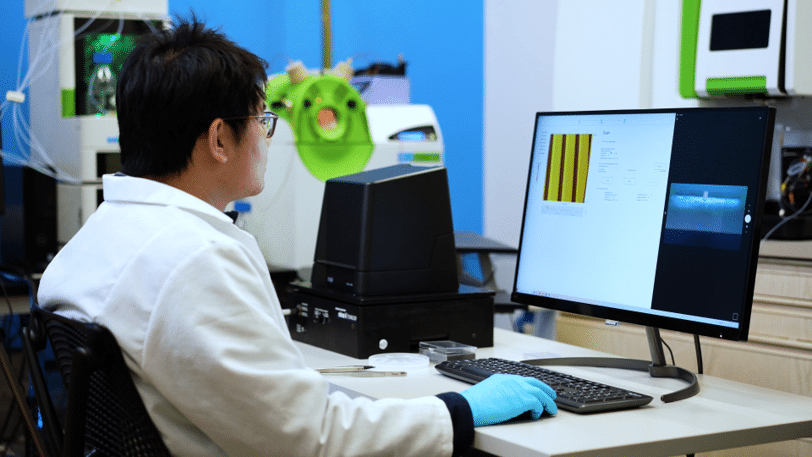
Watch the demo
See unmatched time-to-results. Watch this single-take video to see what Redux operation is like: end-to-end collection of 3D data in under 3 minutes — including sample loading and set-up.

Precise
Quantitative 3D data with sub-nanometer precision

Automated
Built-in scanners and sensors and motorized X, Y and Z stages

Fast
Unmatched time-to-results

Versatile
Topography, roughness, thickness, particle size and more
One instrument. Many solutions.
Make better decisions with quantitative 3D nanoscale data on your benchtop.
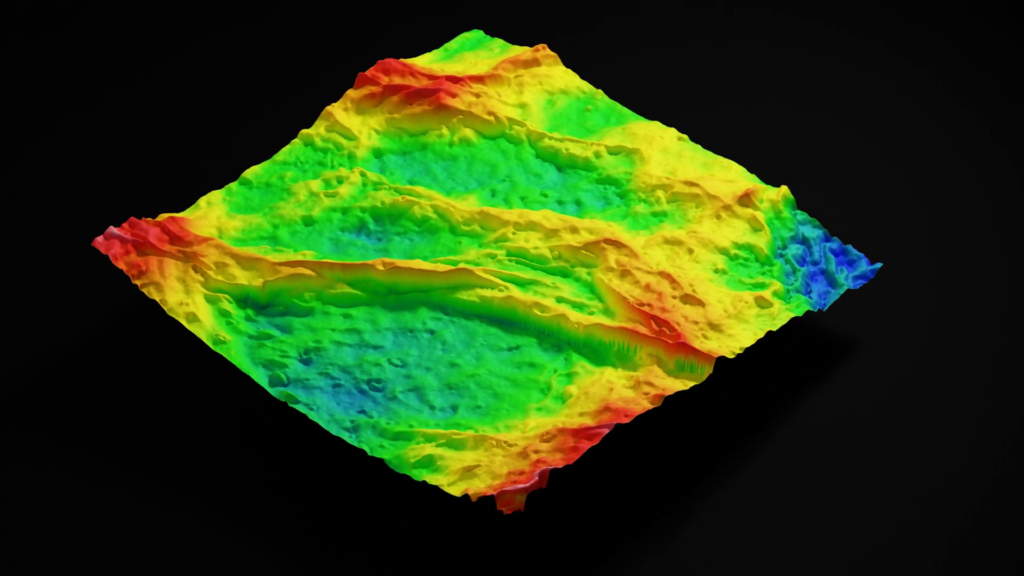
Imaging
Get insights at the nanoscale with quantitative high-resolution topography data.
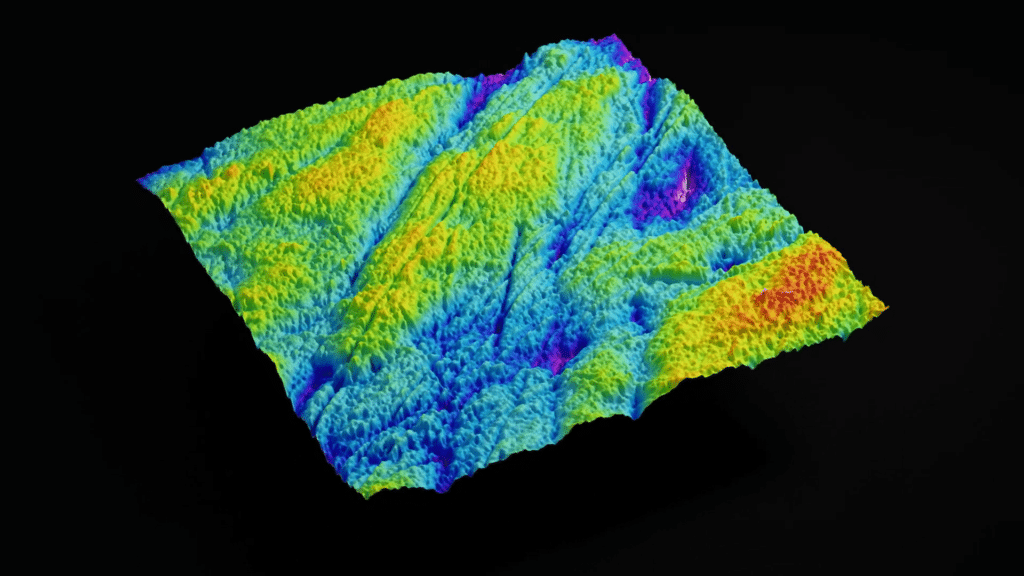
Roughness
Go beyond line profiles and Ra: get high-resolution quantitative data in 3D.
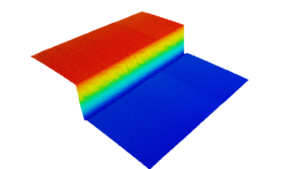
Dimensions
Measure dimensions, including film thickness and step heights accurately.
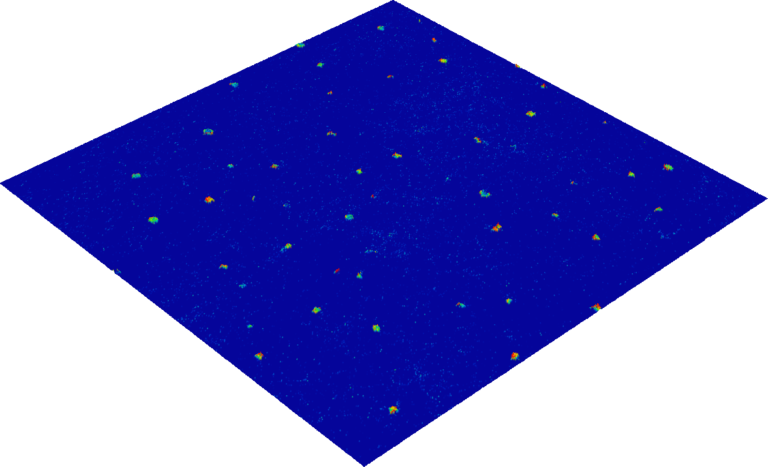
Particle Size
Determine particle size, shape and distribution with sub-nanometer resolution.
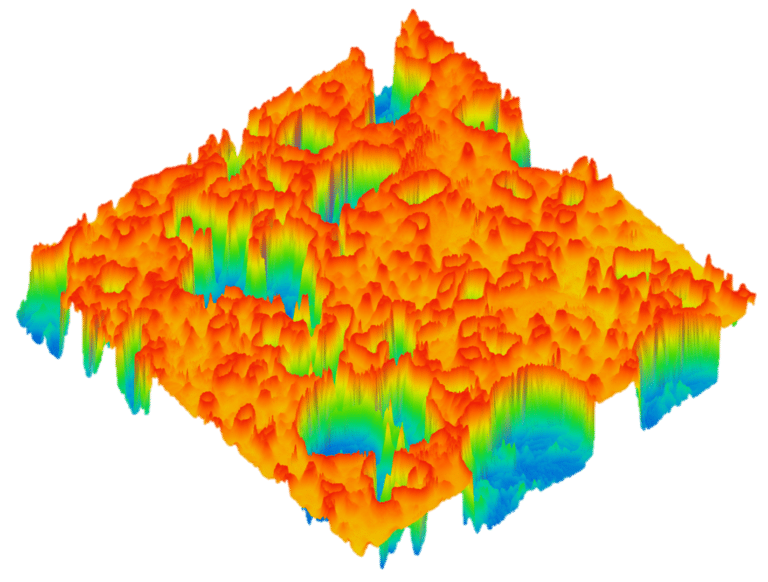
Phase Imaging
Discover the spatial distribution of components with different properties.
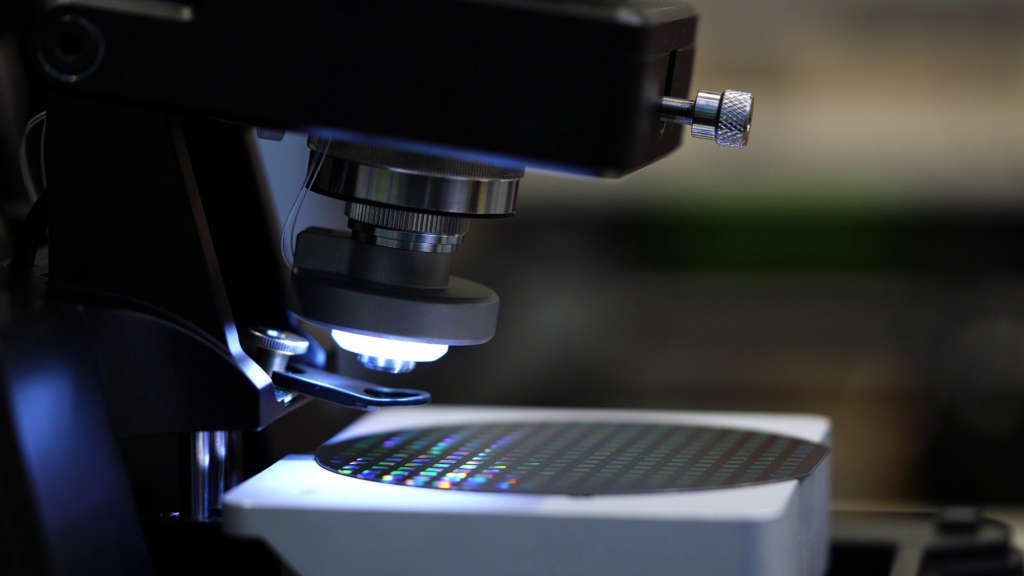
Make discoveries faster
- One-click configuration
- One-click automatic approach in seconds
- Laser alignment-free operation
No laser alignment step or manual approach: an integrated sensor on the AFM chip automates everything for you.
Compatible with your sample
- Opaque or transparent, conductive or non-conductive samples
- Minimal to no sample preparation and non-destructive scanning
- Generous sample platform (125 mm x 100 mm / 5" x 4")
The Redux is compatible with virtually any solid sample, including adhesive samples.
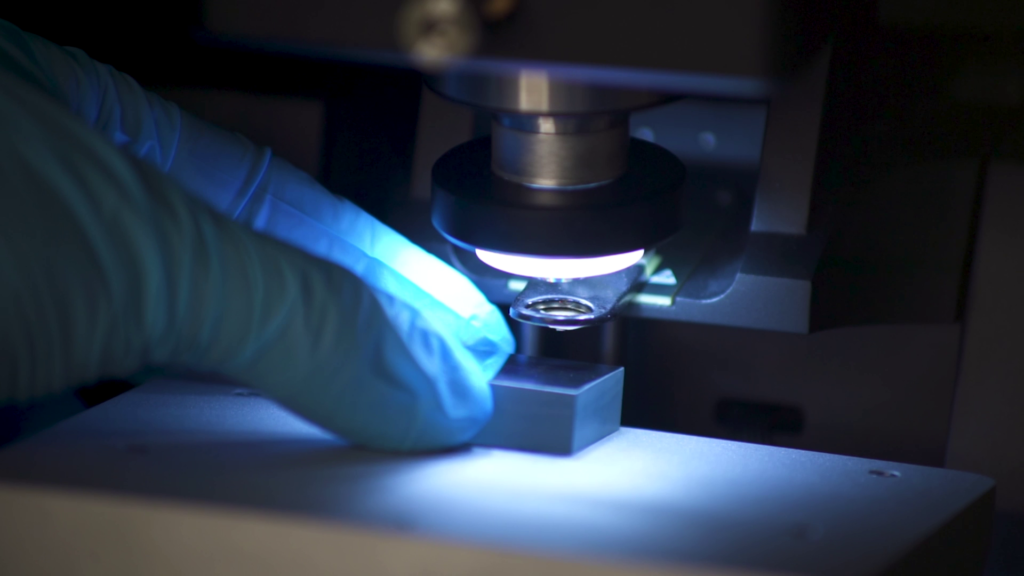
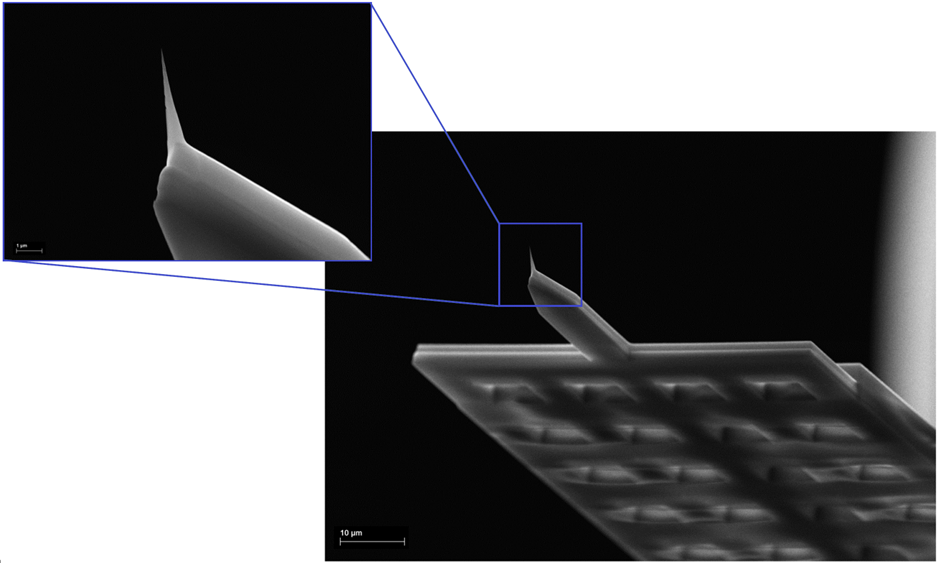
Hassle-free probes
- Extremely low tapping force
- Easy handling
- Built-in sensor prevents tip crashes
A built-in sensor enables extreme durability and no sample damage.
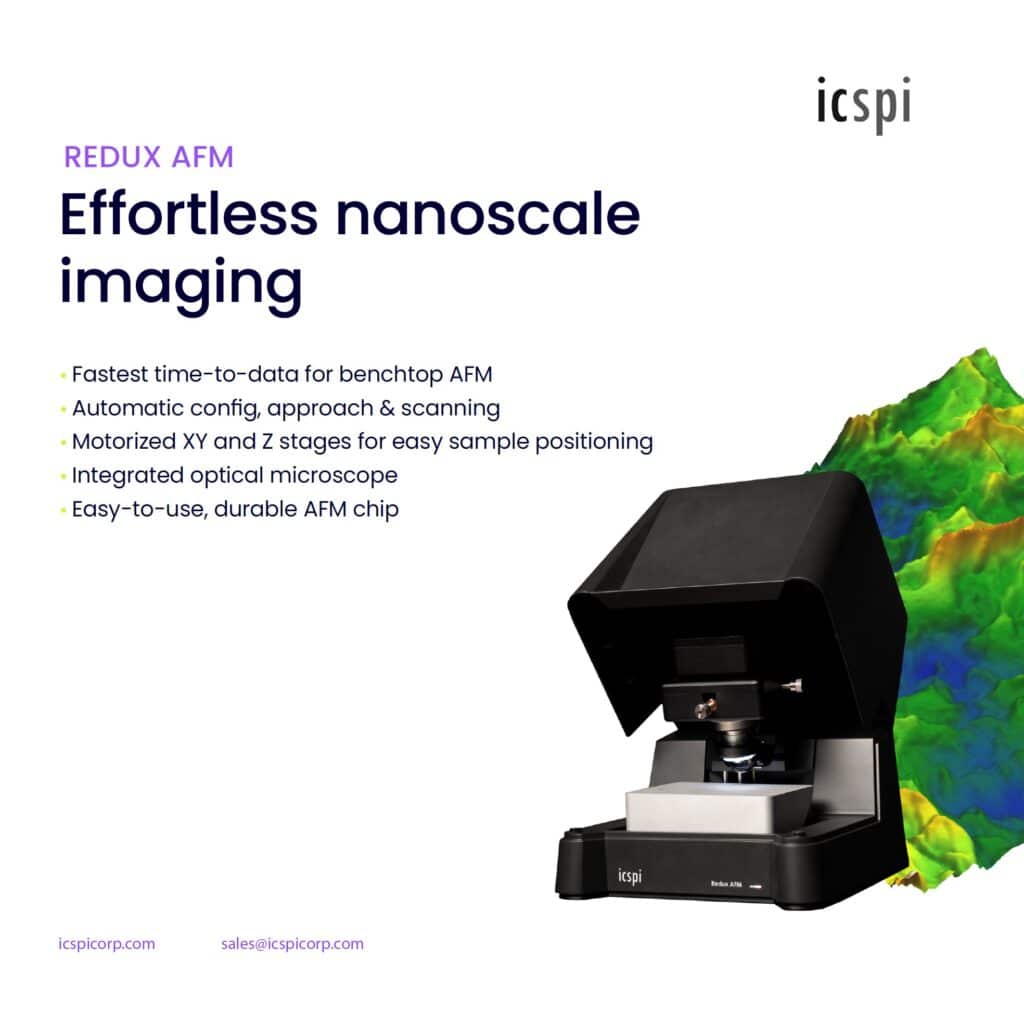
Looking for more details?
Specifications
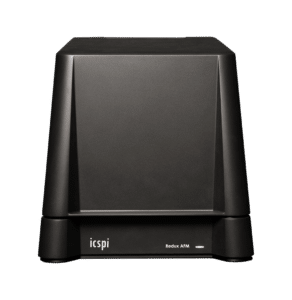
| AFM Specifications | |
| Sensing | Self-sensing, laser alignment-free |
| Z actuation | Self-actuating |
| XY actuation | Electrothermal |
| Max scan area (XY) | 20 μm x 20 μm |
| Z Range | 20 μm |
| Scan speed | 80 seconds (256 x 256 pixel, 20 μm x 20 μm) |
| Noise floor | <0.5 nm rms |
| XY Scanner resolution | <0.5 nm |
| Samples | |
| Sample platform size | 125 mm x 100 mm |
| Max sample height | 20 mm |
| Max sample weight | 250 g |
| Sample condition | Dry |
| Motorized XY Stage | |
| Sample positioning range (XY) | 12 mm x 12 mm |
| Integrated Optical Microscope | |
| Objective | 10x, 0.25 NA |
| Field of view | 1.4 mm × 0.8 mm |
| Resolution | 1920 x 1080 FHD video output |
| Sample illumination | Integrated LED lighting |
| System Dimensions | |
| Dimensions (L x W x H) | 23.2 cm × 22.0 cm × 24.6 cm |
| Weight | 4 kg |
| Software and I/O | |
| Communication | USB |
| Operating System | Windows 10, 11 |
| Data output | Raw (tsv) Processed (png) Gwyddion / AFM analysis software (gsf) |
| Power | |
| Power supply | Class II (two prong) |
| Input | 100-240 VAC ~ 50/60 Hz |
| Output | 12 VDC, 3 A |
| What's in the box | |
| System | Redux AFM system, including optical microscope, motorized XY stage and environmental cover 2x USB-C to USB-A cables Power supply Ground cable (banana plug to alligator clip) AFM chips Tweezers Spare thumb nut |
| Accessories | Acoustic enclosure Vibration isolation table |
| Optional accessories | Calibration gratings Laptop (pre-loaded with operating and analysis software) |
Frequently Asked Questions
Both the Redux and nGauge systems use our AFM-on-a-chip technology to make nanoscale imaging effortless.
The Redux has a higher level of automation, combining an integrated optical microscope and motorized XY stage controls, and it also has a sample platform that can accommodate larger samples.
The Redux is so fast and streamlined because of the built-in sensors and scanners that are part of the system.
The Redux offers unmatched ease of use. There is no laser alignment and all the set-up steps have been automated.
Watch the full demo video above and see for yourself what Redux operation is like.
Yes, the nGauge and Redux can use the same AFM chips. If you already have one of the systems, you can use the chips you already have.
For most samples, yes: there is very little sample preparation required for most samples. Transparent or opaque, conductive or non-conductive, adhesive or not, they can all be scanned. Scanning curved samples is no issue as well since any curvature usually does not show up on the micron length scale.
It’s important that the sample does not move during scanning. For lightweight samples like foils, paper, and for flexible or round samples that could roll (such as single fibers, wire, hair), we recommend affixing them to a substrate (glass slide, mica disc) with adhesive.
Yes, round or cylindrical samples are not a problem. Even very thin wires or fibers can be scanned.
In general, yes. The reason is that even if the morphology across the sample shows high variation (for example, 50 micron), within the relatively small lateral scan area of the AFM, the variation will typically never reach those levels.
The Redux sample stage is motorized in X, Y and Z, and controlled through the operating software.
We strongly recommend using a vibration isolation table to reduce noise and get optimal results. We offer passive and active vibration isolation tables, specifically selected for the Redux.
We strongly recommend using an acoustic enclosure to reduce environmental noise for optimal performance. We offer an acoustic enclosure designed for the Redux.
The Redux does not currently support scanning liquid samples.
Yes. AFM is the highest resolution technique for roughness. It is also capable of scanning larger roughness in the micron range.
The Redux operates in intermittent contact mode (tapping mode) and collects topography and phase images.
The Redux does not currently collect force-distance curves.
Yes. The Redux is compact and can be set up in a glove box.
The Redux lid can be easily removed to make accessing the system easier inside a glove box.
The Redux does not currently support in-vacuum operation and is meant for operation in ambient conditions.
The Redux offers unmatched ease-of-use for AFM systems: it’s as easy to use as an optical microscope. Watch the demo video above to see what to expect with operation.
